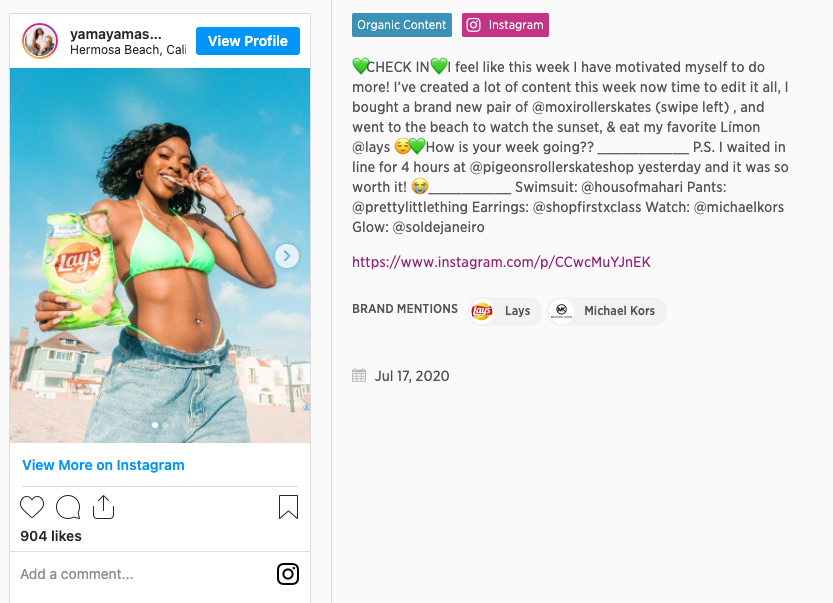The consumers of today are craving authenticity from brands more than ever before.
In order to grab their attention, businesses are looking to expand their efforts beyond digital advertising.
Luckily, with the rise of brand ambassador programs, spreading the word about your products and services can be achieved authentically.
Think of ambassadors as spokespeople; they love your brand and love sharing it with others.
To begin launching a brand ambassador program, follow this guide and start generating buzz through genuine, word-of-mouth marketing.
What is a Brand Ambassador Program?
Brand ambassadors are often mistaken for social media influencers, but they serve different roles. While both influencer marketing and ambassador programs can help you expand your audience and drive sales, ambassadors are more invested in your brand and its long-term success. They may participate in trade shows or simply share stories and endorsements of your products online.
In a brand ambassador program, you recruit enthusiastic advocates and build your relationships with them. Those advocates then help you drive sales and build brand awareness online and offline by following a campaign strategy. A program like this requires careful planning and continuous maintenance, but it can also prove invaluable to your brand’s reputation.
How to Find and Recruit Ambassadors
You have several options when it comes to finding and recruiting ambassadors.
One approach would be searching social media platforms for potential ambassadors and reaching out to them. Perform a keyword or hashtag search to find people who are talking about your brand or products. Take note of each profile that’s talking favorably about your brand. Review their past posts and communication style before deciding to reach out.
To make this process easier, try using influencer marketing tools from platforms like IZEA to narrow your search. For example, the VizSearch feature in IZEAx Discovery and IZEAx Unity Suite allows you to search by hashtag and sort the results by location, engagement rate or post type. As you browse the results, you can also see their follower count. Here we’ve used the hashtag for a popular roller skate brand and you can clearly see images of their product in the search results.

This tool even displays what brands the social media user may have worked with in the past, helping you avoid conflicts of interest and make informed decisions when finding ambassadors for your program.

The most passive option is to let them come to you. Create an online application form that collects information such as a candidate’s contact info, location, and social media profile. You’ll also want to include a field that gives a candidate space to explain what they love about your brand and why they want to be an ambassador.
Make sure the program is well advertised; try posting information about it on your brand’s official social media pages and website. Open the application to customers as well as your own employees. Review the applicants and follow up with people you believe will be effective advocates.
Get to Know the Candidates and Their Goals
Once you’ve narrowed down your list of potential ambassadors, you’ll want to get to know them on a personal level. Ask about their hobbies, how long they’ve been interested in your brand and their past experiences with online marketing. Here’s another question you’ll want to pose: “What are your long-term goals as far as this program is concerned?”
Some people are simply hoping to add to their resume or receive free goodies from your brand. Others may want to formally join your organization as an employee. By learning what motivates each individual candidate, you can better gauge how well they’ll fit the role.
Set Your Expectations and Rules
You want all the ambassadors in the program to be on the same page in terms of messaging and brand goals. A clear list of expectations is key. Here are a few things you’ll need to communicate and include in a formal contract:
- How often will each ambassador post and on which platform?
- Will they need to participate in brand events (virtual or in-person)?
- Is there a specific tone they need to stick to in their messaging? Are there any phrases or products and services they should mention?
Give ambassadors enough freedom to get creative with their advocacy efforts. You don’t want to completely control every word of their endorsement. Authenticity is key.
Offer Incentives
Some ambassadors may love your brand so much that they’ll be willing to advocate for you without much compensation. However, many will appreciate free products, discounts or even cash for their work.
You might choose to pay ambassadors based on how effective they are at marketing. Give each one a referral code they can share with consumers on social media. These referral codes help you track how well each ambassador is performing.
Compensation matters should appear in a formal contract. Ambassadors will also need to disclose their relationship with your brand in their social media posts. The FTC has a guide you can follow.
Track Success
In addition to sales and traffic, you’ll also want to keep an eye on how often each ambassador is posting and how closely they’re following your ground rules. Are any of them exceeding your expectations in terms of engagement? Keep those ambassadors in mind for future opportunities such as trade shows and company positions.
On occasion, you might need to remind ambassadors of the overall goal of the program. Give them feedback, both in the form of praise and advice on how to be more effective advocates.
Communication shouldn’t be a one-way street. Listen to ambassadors when they pitch ideas. And if they have content creation skills, such as video or photo editing talents, give them opportunities to put those skills to use.








